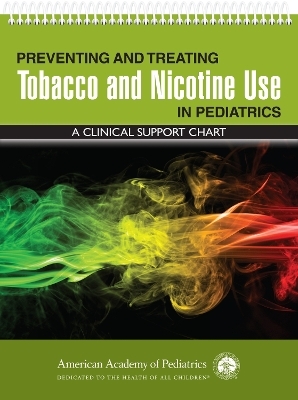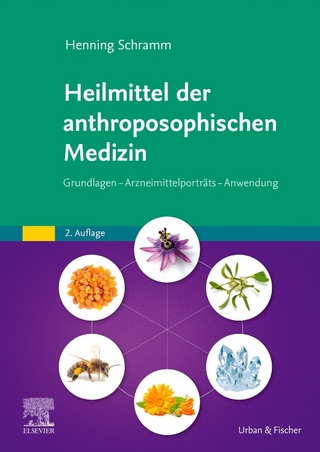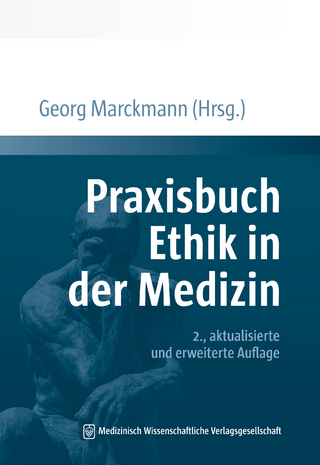
Preventing and Treating Tobacco and Nicotine Use in Pediatrics
American Academy of Pediatrics (Verlag)
978-1-61002-700-7 (ISBN)
This convenient reference provides clinicians with point-of-care guidance to help their patients stop using tobacco- and nicotine-containing products--as well as the latest clinical data to encourage them to never start.
Contents Consist of
Nicotine-Containing Products
Tobacco Use Disorder/Adverse Effects
Prevention and Treatment
Withdrawal Management, With and Without Medication
Policy and Resources
Harold J. Farber, MD, MSPH, FAAP is a Professor of Pediatrics, Pulmonary Division at Baylor College of Medicine and Pediatric Pulmonologist at Texas Children's Hospital. His interests and accomplishments have focused on asthma, muscular dystrophies, tobacco dependence, and tobacco control. Dr. Farber has served as lead or co-author for close to 100 articles in the peer reviewed scientific literature. He has authored chapters on asthma education and on tobacco dependence for allergy and for pulmonary textbooks. Dr. Farber has served as co-principal investigator for the Lowering Environmental Tobacco Smoke Exposure: LETS Manage Asthma study. He served as founding executive committee member and policy chair for the American Academy of Pediatrics Section on Tobacco Control (now the Section on Nicotine and Tobacco Prevention and Treatment) and as chair of the American Thoracic Society Tobacco Action Committee. He served as co-author for the American College of Chest Physicians Tobacco Dependence Toolkit and as co-chair for the American Thoracic Society Clinical Practice Guideline, Initiating Pharmacologic Treatment in Tobacco Dependent Adults. Dr. Farber is a frequent speaker on tobacco control and tobacco dependence issues. He is interested in helping to ensure that tobacco dependence prevention and treatment is incorporated as a routine part of pediatric care. Outside of medicine, Dr. Farber’s interests include music, travel, and photography. His current musical interests include jazz and opera. Matthew “Matt” Bars is a master's-level psychologist and has been engaged in the treatment, management, and administration of nicotine addiction services for many years. Matt was the Clinical Director of the IQuit Smoking Program at RWJ Barnabas Health-Jersey City Medical Center, Jersey City, New Jersey, and was appointed to their medical staff in 2011. He is also the co-developer and Clinical Director of the Tobacco Treatment Program of the New York City Fire Department (FDNY). The FDNY Tobacco Treatment Program enjoys a biochemically confirmed quit rate of ~70% at 10 year follow-up. Matt is also a former President of the Association for the Treatment of Tobacco Use and Dependence (ATTUD). ATTUD is a non-profit organization of providers dedicated to the promotion of and increased access to evidence-based tobacco treatment for the tobacco user. Since December 2006, he has been retained by the American College of Chest Physicians as a principal author for their Tobacco Treatment Toolkit, a training and consultation document and online resource for pulmonologists and other clinicians worldwide. In addition, he helps physicians, hospitals, and medical centers establish sustainable and clinically successful tobacco treatment programs. In March 2013, Matt was appointed to the faculty of St. George’s School of Medicine, Department of Psychiatry and he also serves on the editorial boards of the Journal of Smoking Cessation and the Journal of Medical Internet Research. Matt is the creator, founder and Chief Quitting Officer of IntelliQuit.org and CustomQuit.com, the world's first point-of-care, cloud-based biochemical nicotine monitor for health care professionals and tobacco and nicotine dependent patients.
TAB 1. INTRODUCTION: NICOTINE-CONTAINING PRODUCTS
Tobacco and Nicotine Use in Adolescents
Tobacco Products
Youth-Friendly Flavors
Examples of ENDS
TAB 2. TOBACCO USE DISORDER/ADVERSE EFFECTS
Tobacco Use Disorder
Nicotine Addiction
What Are the Symptoms of Nicotine Withdrawal?
Harms of Smoking, Secondhand Smoke, and ENDS
Health Consequences Causally Linked to Smoking
Health Consequences Linked to ENDS
Educate Parents and caregivers on Signs That an Adolescent May Be Smoking or Vaping
Smoking
Vaping
TAB 3. PREVENTION AND TREATMENT
Prevention
Treatment
Basic Principles of Tobacco Product Dependence Treatment
Issues in Treating Adolescents
Make a Plan With the Adolescent
Ask About Tobacco Product Use and Exposure, Including E-cigarettes
Tips
Ask-Counsel-Treat
Counseling Strategies for Stopping Tobacco Product Use
Motivational Interviewing
OARS Approach
Making a Change
Assess Importance
Importance: Pros Versus Cons
Assess Confidence
Increase Confidence
The 5 Rs
Other Tips
Arrange Follow-up
Assessing Nicotine Dependence
Rapid Assessment of Tobacco Dependence
Nicotine Dependence Scales
Other Tools Focused on Adolescents
Other Tools for Adults
TAB 4. WITHDRAWAL MANAGEMENT, WITH AND WITHOUT MEDICATION
Management of Nicotine Withdrawal: Non-pharmacological Strategies
Pharmacotherapy for Tobacco Product Dependence
Issues in Treating Adolescents Who Have Tobacco/Nicotine Dependence
Issues in Prescribing to Parents
Notes
Managing Relapse
Create an Action Plan With the Adolescent/Parent
Advanced Approaches for Adults
TAB 5. POLICY AND RESOURCES
Public Policy
AAP-Endorsed, Evidence-Based Policy Recommendations
Additional Evidence-Based Policy Recommendations
Resources
AAP Publications
References
| Erscheinungsdatum | 02.02.2024 |
|---|---|
| Verlagsort | Elk Grove Village |
| Sprache | englisch |
| Maße | 216 x 279 mm |
| Gewicht | 272 g |
| Themenwelt | Medizin / Pharmazie ► Gesundheitswesen |
| Medizin / Pharmazie ► Medizinische Fachgebiete ► Medizinethik | |
| Medizin / Pharmazie ► Medizinische Fachgebiete ► Pädiatrie | |
| Medizin / Pharmazie ► Pflege ► Kinderkrankenpflege | |
| ISBN-10 | 1-61002-700-0 / 1610027000 |
| ISBN-13 | 978-1-61002-700-7 / 9781610027007 |
| Zustand | Neuware |
| Informationen gemäß Produktsicherheitsverordnung (GPSR) | |
| Haben Sie eine Frage zum Produkt? |
aus dem Bereich


